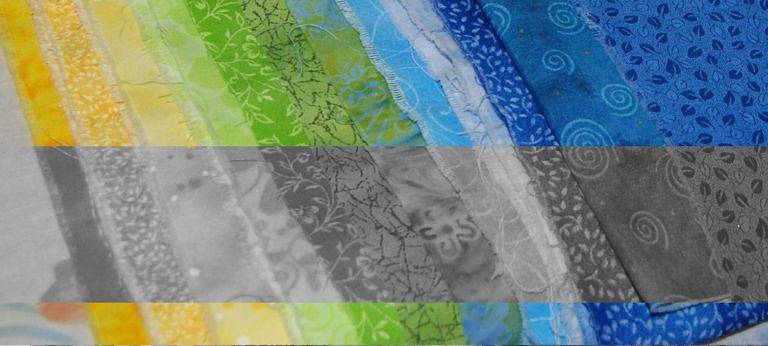I’ve been looking at lots of bento box quilts trying to decipher what makes some blocks work so well (clear center rings), and some so poorly. (For a reminder of what the pattern looks like, see my old post here.) Each square contains an internal L against a background color, and you assemble four squares (with the Ls rotated appropriately) to make a block with a ring. From what I can tell, there seem to be four rules:
- The two background parts should have the same fabric.
- The diagonal squares of a block should not have the same backgrounds/Ls.
- The diagonal squares of adjacent blocks should not have the same background.
- The L and the background need to be different colors or tones.
The tone vs. color issue is interesting. I took a picture of my fabrics and transposed part of it in black and white so that I could see the darker vs. lighter fabrics. Isn’t it kind of surprising that that yellow on the far left is one of the darkest fabrics? And that that second green is so much darker than the two to the right of it?
Since I need 36 squares and I have 12 fabrics, I started by cutting pieces for three backgrounds and three Ls per color. (There was some fudging, since I didn’t have enough for three and three of all of the fabric options.) I love the way the piles of pieces look, waiting to begin sewing.
I cut all of the pieces for the quilt top on Saturday morning, and then sewed the squares together in batches on Sunday.
Next up is figuring out the placement of the squares and seaming the top together. It’s so satisfying to be making progress so quickly – it’s a speedy pattern, and the small size helps, but I also think I’m getting better at organizing my sewing before I start.




I agree – seeing the black and white compared to the colored version is interesting – and quite surprising.